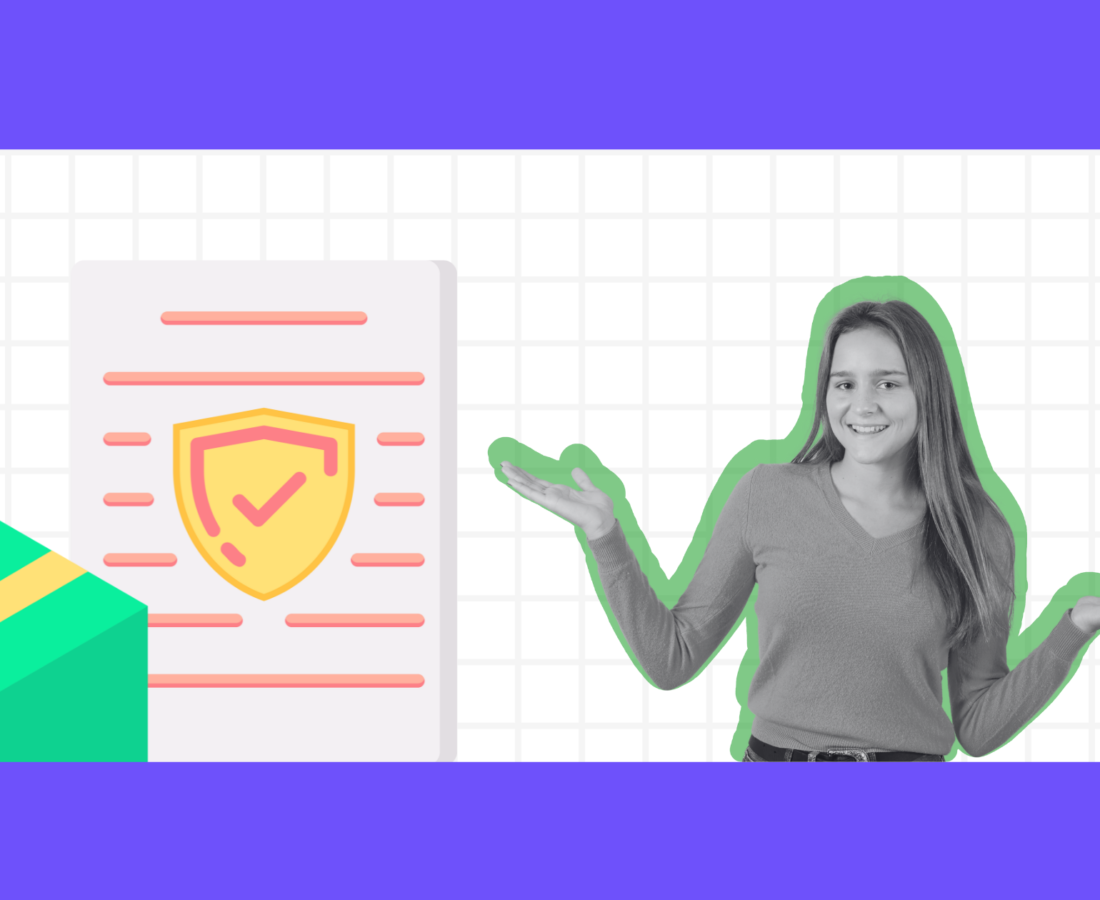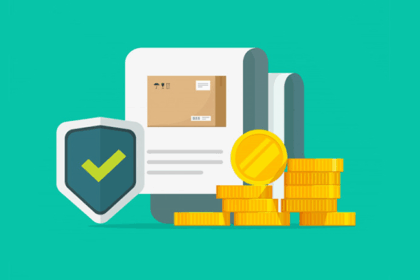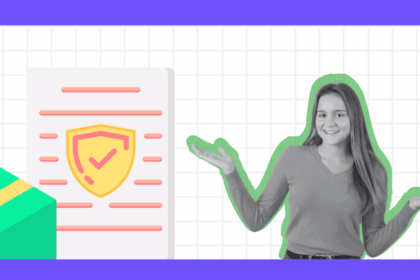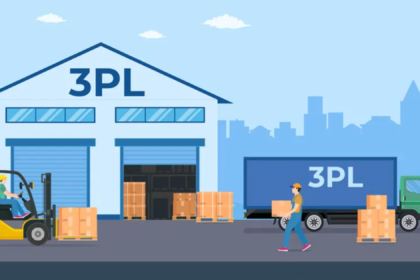You’ve partnered with a Third-Party Logistics (3PL) provider to handle your warehousing and shipping because it’s more efficient, scalable, and cost-effective than in-house.
But here’s the part many businesses don’t consider until something goes wrong: who’s financially responsible if your inventory gets damaged, lost, or stolen while it’s with your 3PL?
It’s easy to assume the logistics provider has that covered. After all, they’re storing and shipping your products, right?
But in most cases, their liability is limited and not nearly enough to cover the value of your goods. That’s where 3PL insurance becomes paramount.
So, what does 3PL insurance cover? When is it your responsibility vs. the provider’s? And how do you know if your current setup leaves dangerous gaps?
This article breaks down the different types of coverage, how they work, and what you need to know before signing your next logistics contract.
What is 3PL Shipping Insurance?
3PL or third-party logistics shipping insurance protects your goods while they are being stored, handled, or transported by a 3PL provider. Basically, it helps cover financial losses if your inventory is lost, damaged, or stolen while in the 3PL’s possession, inside their warehouse, or during the shipping process.
For example, you run an e-commerce store, and your 3PL misplaces a high-value shipment or damages a pallet in transit.
Without shipping insurance, you absorb that loss. But with a 3PL shipping insurance policy, you’re covered, your goods are protected, and your bottom line doesn’t take the hit.
Types of Insurance Coverage in 3PL
Here are three key types of coverage to consider when working with a 3PL, each designed to protect different parts of your supply chain:
Warehouse Legal Liability Insurance
This type of insurance is rooted in the idea that a warehouse is legally obligated to handle and store your goods with care. If the facility fails to meet that standard, say through mishandling inventory or neglecting safety protocols, and your goods are damaged, this policy steps in to cover the loss.
For example, it could be a forklift bumping into pallets or someone shelving inventory in the wrong climate zone.
This insurance only kicks in when there’s proven negligence. If your inventory is ruined by something no one could have predicted, like a burst pipe during a freak freeze, you’re alone unless that scenario was explicitly covered.
That’s why it’s worth going beyond the base policy and asking the tough questions like:
What’s the worst-case scenario, and would this policy really help me recover?
Why 3PL Shipping Insurance is Essential?
3PL shipping insurance is essential because it ensures your inventory is protected while under someone else’s care.
Once your inventory is in the hands of a third-party logistics provider, your control over it ends, but your liability doesn’t. That’s the critical gap most businesses overlook. While 3PLs handle the storage and shipping, their liability for loss or damage is often minimal, based on generic terms or low per-pound reimbursement rates.
Without dedicated shipping insurance, any mistake from a warehouse mishap to a lost shipment comes out of your pocket. And in fast-moving supply chains, even a single damaged pallet can mean thousands in losses, late deliveries, or disappointed customers.
How to Choose the Right 3PL Shipping Insurance?
Choosing 3PL shipping insurance helps ensure your coverage protects what you’re trusting someone else to handle. Here’s how to make the right call:
1. Understand your risk exposure
Start by evaluating the type, volume, and value of the inventory you’re handing over. Are you shipping fragile items? High-ticket products? Perishables? The risk profile of your goods directly influences the kind of protection you need.
For example, if you’re shipping electronics, coverage for water damage and theft during transit is non-negotiable.
2. Review the 3PL’s liability limits
Don’t assume your provider’s insurance will cover your loss. Many only offer limited liability based on weight (e.g., $0.50 per pound), often far below the actual product value.
Ask for a copy of their insurance policy and liability cap. Now, compare that with the average value of your shipments.
3. Look for all-risk or comprehensive policies
Basic carrier insurance has exclusions, such as weather events, theft, or accidental damage, which are not usually covered. However, an all-risk policy provides the broadest protection, including loss, damage, or mishandling throughout the fulfillment and shipping process.
For teams that want a more complete safety net, LateShipment.com includes optional all-risk insurance that stays active from the moment your product leaves the warehouse until it’s delivered. This insurance is particularly useful when your goods move through multiple carriers or when you’re shipping fragile, high-cost items.
4. Check coverage scope
Some policies cover only while goods are in storage, while others extend to transportation. Ideally, you want door-to-door coverage so you’re protected during every stage of the journey.
5. Verify claim processes and turnaround times
The true value of insurance is revealed when something goes wrong. Check how claims are handled:
- How fast can you file?
- What documentation is required?
- How quickly are claims resolved?
With LateShipment.com, the claim process is built into the same platform you already use for tracking and analytics. If a shipment gets delayed, lost, or damaged, you don’t need to go to a separate insurance portal or follow up manually. This is because it’s all handled for you. For busy teams, this kind of support can make all the difference.
6. Ask if coverage includes third-party handling
If your products pass through multiple carriers, fulfillment centers, or distribution hubs, ensure the policy remains. Some limit coverage to a single handler or location.
Setting Terms in Your 3PL Contract
Your 3PL contract is where you draw the line between “our responsibility” and “theirs.” And if you skip the details, you’re leaving room for miscommunication and lost money when something goes wrong.
At the center of this contract is liability. You need to be clear on what happens if your inventory is damaged, goes missing, or gets misrouted. Most 3PLs will point to their insurance policy, which typically only covers “reasonable care,” but that’s vague. If you expect more than standard handling (like climate control, special packaging, or faster turnaround), you need it written into the contract.
For example, if your 3PL agrees to provide that extra level of care, you need to confirm they’re financially equipped to follow through. If their insurance caps coverage at $0.50 per pound and you’re storing $100,000 worth of electronics, that will not cut it.
What to Cover in the Contract (With Examples)
- Liability limits: Spell out how much they’ll reimburse for loss or damage. For instance, push for full-value coverage on high-cost inventory instead of defaulting to $0.50/lb.
- When risk transfers: Clarify exactly when the 3PL becomes responsible for your goods. Is it when they check it in? When it’s loaded for delivery? This avoids the “not our fault” blame game.
- Custom handling expectations: If your items need to be kept below a certain temperature, or require careful stacking, state those conditions. Example: “Boxes must be stacked no higher than 4 units per pallet to avoid crushing.”
- Proof of insurance: Request their COI (Certificate of Insurance) and review their coverage. If they offer to do more than their insurance covers, ask what happens if there’s a loss.
- Claims process: Don’t leave this vague. Set a deadline (e.g., claims must be filed within 7 days of discovery) and list exactly what documents are needed—photos, timestamps, inventory logs, etc.
- Dispute resolution: How will you handle disagreements? Is it through mediation? Or through arbitration? Set a protocol so you’re not winging it when money’s on the line.
Common Risks Covered by 3PL Shipping Insurance
Most reputable 3PL providers carry Warehouse Legal Liability Insurance, which holds them accountable for exercising “reasonable care” while storing and handling your goods. If damage or loss occurs due to their negligence, such as improper handling, loading mistakes, or shipping the wrong items, their policy is designed to step in and cover the resulting loss.
However, that coverage is often limited by contract and may not reflect the full value of your goods. So, even if the 3PL is clearly at fault, their insurance might only cover a portion of your loss.
That being said, here are the common risks covered by 3PL shipping insurance:
- Mishandling of inventory – damage from careless loading, stacking, or movement inside the warehouse.
- Incorrect product fulfillment – shipping wrong or damaged items to customers.
- Negligent storage conditions – exposure to elements like humidity, heat, or cold if proper controls aren’t followed.
- Lapses in security – theft or unauthorized access due to poor facility safeguards.
- Improper documentation or labeling – leading to lost or misrouted shipments.
- Operational errors – like forklift accidents or racking failures that physically damage your goods.
Limitations and Exclusions
While 3PL shipping insurance offers valuable protection, it doesn’t cover everything, and many businesses get caught off guard by this. Understanding what falls outside the coverage is essential so you’re not left with unexpected losses when things go wrong.
Some of the common limitations to watch for:
- Liability caps: Most 3PL contracts cap the reimbursement amount, often based on weight (e.g., $0.50/lb), not the actual value of your product. That means expensive items could be significantly underinsured.
- Negligence-only coverage: Many warehouse policies only cover losses if the 3PL is proven negligent. If damage happens and there’s no clear fault (e.g., a roof leak during a storm), you may be out of luck.
Limited scope of responsibility: The 3PL may only be liable during certain phases, such as storage, not during transit or handoffs between carriers.
Typical Exclusions You Should Know:
- Acts of god: Natural disasters such as floods, earthquakes, or fires may not be covered unless explicitly stated.
- Inherent defects: Damage due to the nature of the product itself (like spoilage or product instability) is usually excluded.
- Unsecured goods: If your items weren’t appropriately packaged or labeled clearly before arrival at the warehouse, the 3PL might not be liable for damages.
- Loss from unauthorized access or cyber incidents: If data breaches or unauthorized system access affect your shipments, most standard 3PL policies will not apply.
Best Practices for Managing 3PL Shipping Insurance
Managing 3PL shipping insurance requires active oversight, coordination, and periodic review to ensure your coverage evolves with your operations. Here are the best practices to help you stay protected without leaving blind spots.
- Start by sitting down with your 3PL agreement and their insurance policy. Go through it carefully, not skimming. The key is to spot where their responsibility ends and yours begins. For example, many 3PLs cap their liability based on weight or only cover goods while they’re in the warehouse and not during transit. Once you know those blind spots, you can fill them with coverage that matches your risk.
- If your products pass through multiple hands from warehouse to carrier to final-mile delivery, look for policies that bundle protection across all those stages. That way, you’re not left unprotected in the gaps between handoffs.
- Flag and monitor shipments with higher-than-average value. For those, add shipment-specific insurance riders with higher claim ceilings and additional protections.
- Ensure your 3PL has a straightforward, consistent process for documenting issues like damaged goods or late deliveries. When it’s time to file a claim, the photos, notes, and timestamps will make your case strong or weak.
- Your fulfillment model may shift with new SKUs, shipping zones, or seasonal volume. Revisit your insurance coverage quarterly or biannually to align it with real-time risk.
- And don’t forget the people behind the process. Your logistics team should know exactly what to do if something goes wrong, who to notify, how to file a claim, and what documentation to save.
- One way to simplify many complexities is by using a platform like LateShipment.com, which offers unified insurance coverage across the entire delivery chain. You’ll know your products are protected during every handoff, something that’s especially helpful for eCommerce brands or businesses scaling across multiple regions.
How LateShipment.com Helps You Get the Most Out of Your 3PL Partnership
As your business scales, shipping and fulfillment can shift from a daily chore to a full-blown logistical headache. That’s when 3PL gives you back time, reduces costs, and keeps your customers happy.
But choosing the right shipping insurance requires a lot of factors to consider.
Before you commit, consider your current volume, seasonal spikes, storage needs, rising shipping costs, and, most importantly, your customer experience. Are delays creeping in? Are support tickets piling up? Is your team stretched thin?
This is where tools like LateShipment.com become invaluable. Our platform helps you work with 3PLs and also helps you manage them.
Here’s How LateShipment.com Helps You Optimize 3PL Fulfillment:
- Tracks shipments in real-time across carriers so you can monitor every delivery without toggling between systems
- Automatically detects delays and sends branded customer notifications to reduce support tickets and build trust
- Files refund claims for late deliveries so you recover costs without lifting a finger
- Generates performance analytics on delivery speed, delays, and customer experience
- Integrates easily with your existing systems, from your 3PL partner to your order management tools
- It helps you hold your 3PL accountable with data
And if you want extra peace of mind, LateShipment.com also offers affordable shipping insurance with fast claims and no paperwork headaches.
You could be shipping high-value products or just want to avoid the hassle of lost or damaged packages. Our built-in insurance feature protects your revenue and reduces customer frustration, without complicating your operations.
Related Readings
FAQs About 3PL Shipping Insurance
1. What exactly does a 3PL company do?
A 3PL provider handles logistics operations on your behalf. This can include warehousing, inventory management, order fulfillment, packing, and shipping. Some also offer value-added services like returns processing and customer support.
2. When should a business consider switching to a 3PL?
It might be time if you’re struggling to keep up with shipping volumes, running out of storage space, or spending more time on logistics than growing your business. A 3PL can scale operations, reduce costs, and improve delivery efficiency.
3. Does using a 3PL mean I lose control over my shipping?
Not at all. A good 3PL should act as a partner, not a replacement. With the right tools (like LateShipment.com), you’ll maintain complete visibility into your orders, carrier performance, and customer experience without managing the daily logistics yourself.






